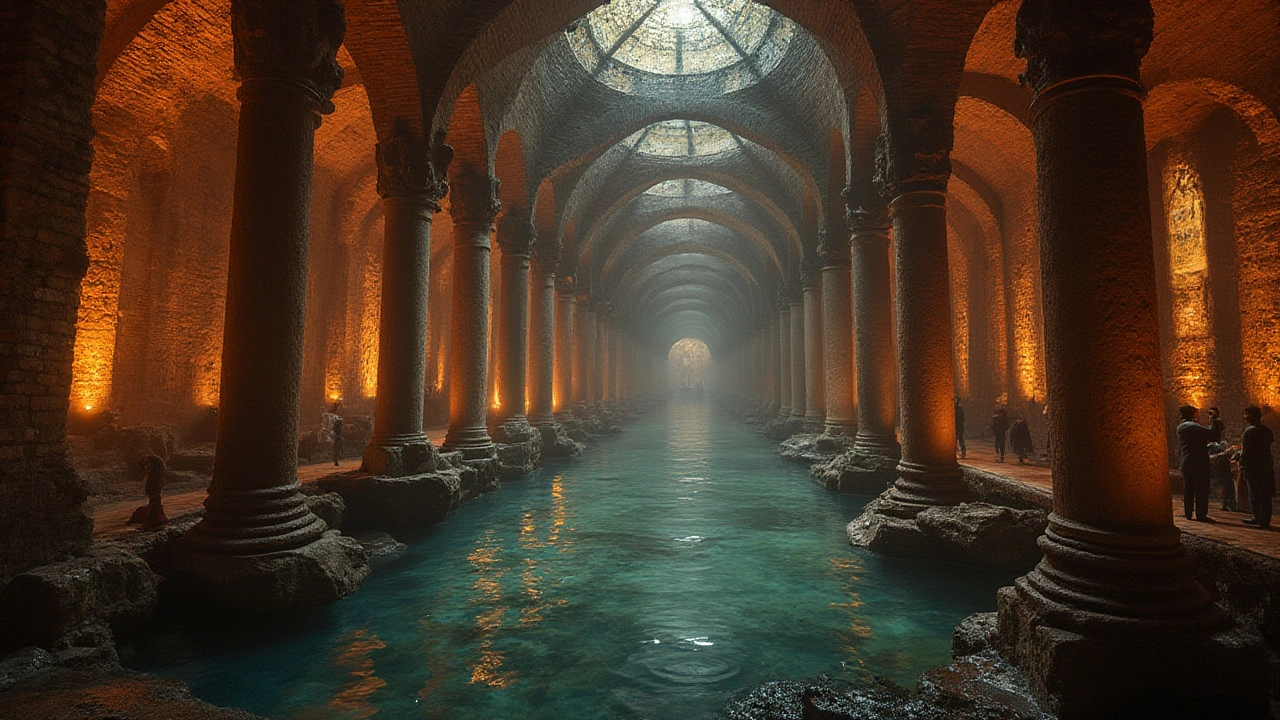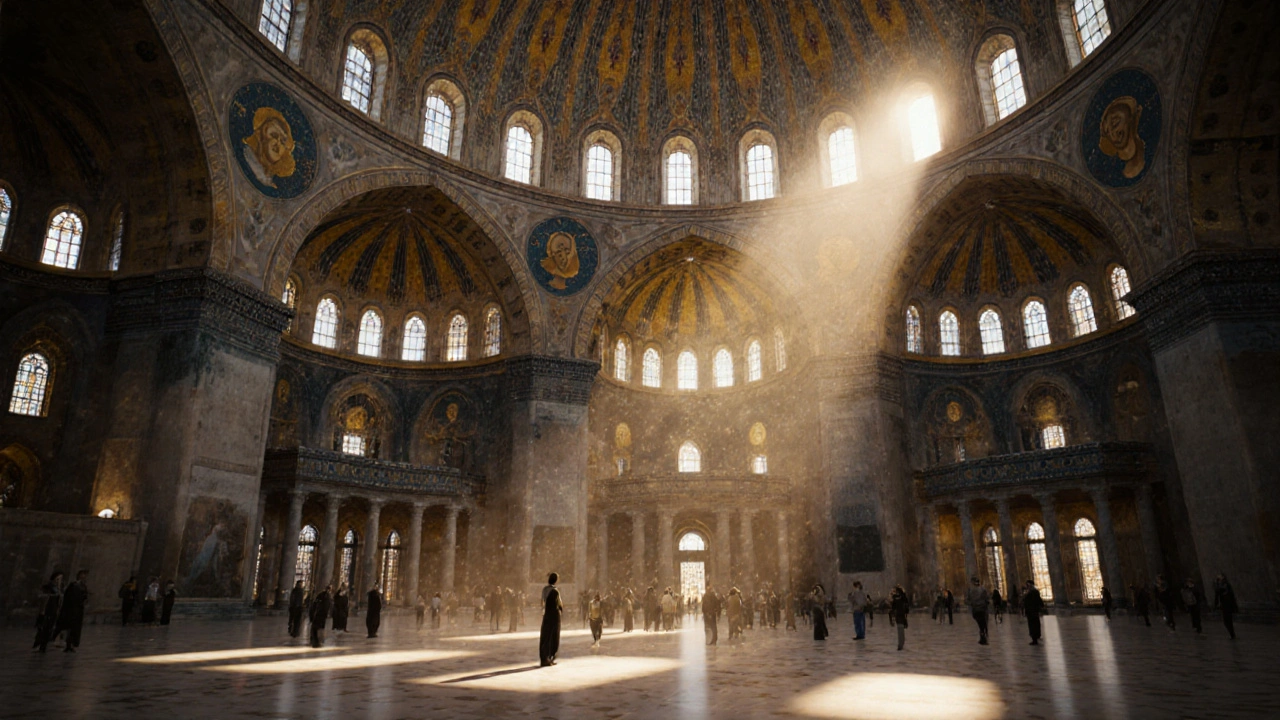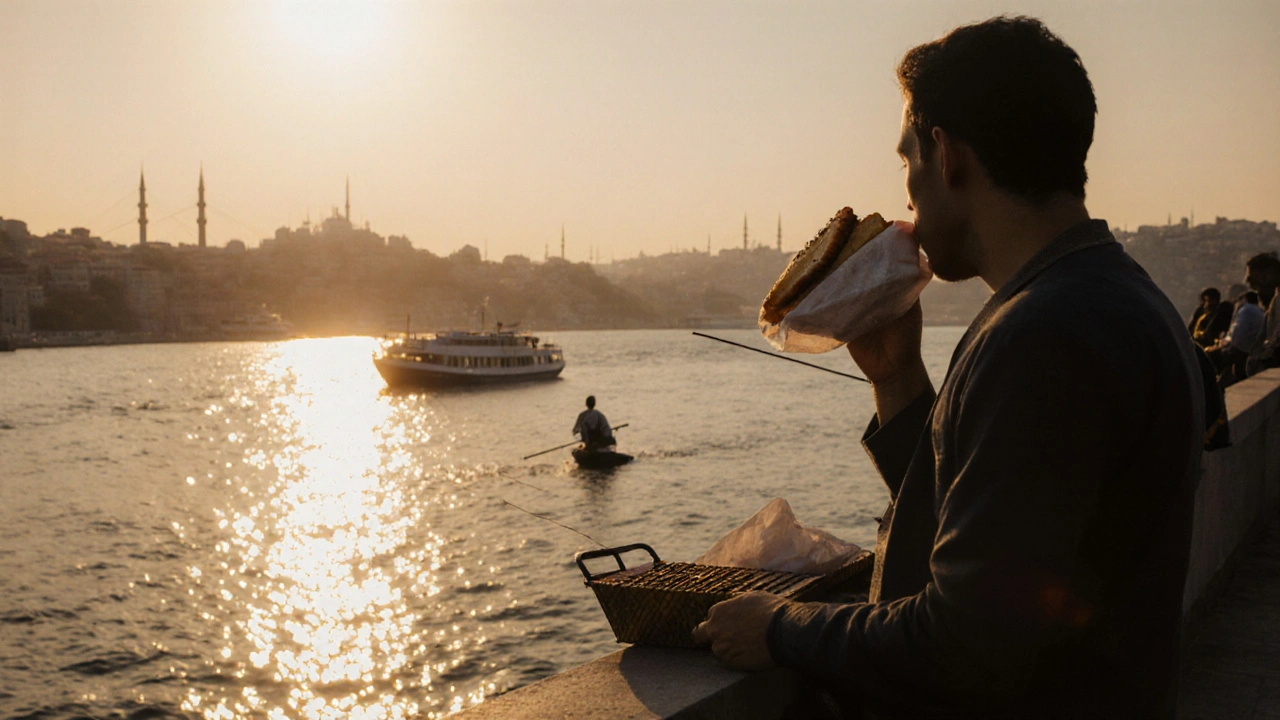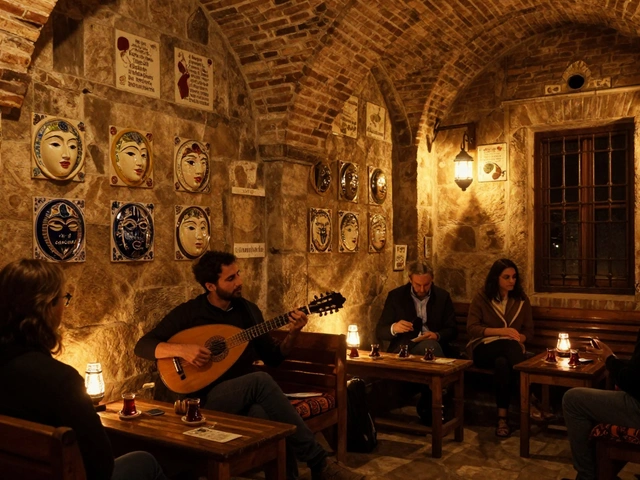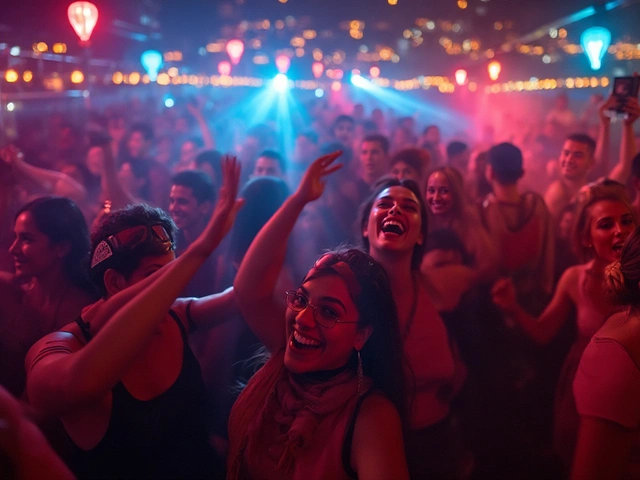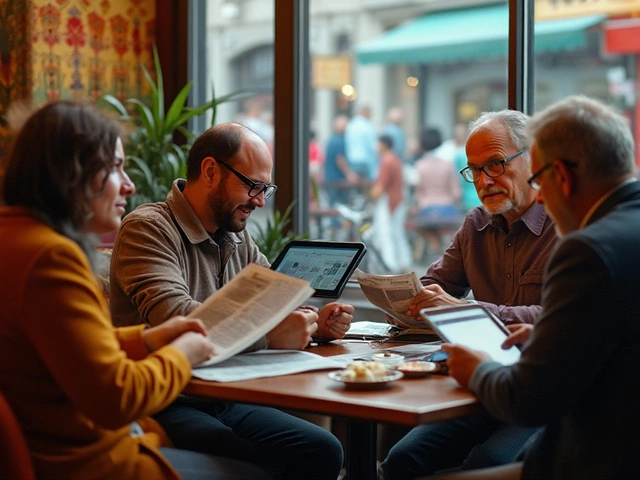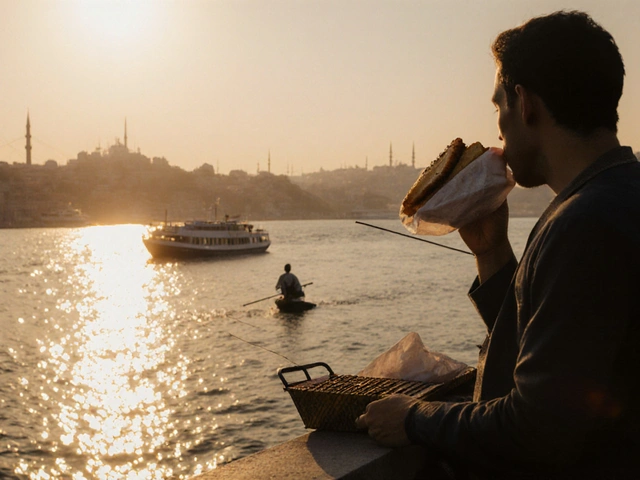Down in the heart of Istanbul, beneath the chaos of Sultanahmet, an eerie silence wraps around the dim columns of the Basilica Cistern. Most locals and visitors walk past its subtle entrance daily, not imagining that, just below their feet, ancient water echoes carry stories of emperors, forgotten gods, and modern-day artists. In a city where grandeur is plenty—Blue Mosque domes and market lanterns—this underground palace quietly shakes things up. It’s Istanbul, but not as you know it: part lost Roman treasure, part gallery, part city legend, and total time machine.
Origins and Secrets Beneath Istanbul’s Surface
Few places in Istanbul are loaded with as much mystery as the Basilica Cistern. Locals call it "Yerebatan Sarnıcı"—the sunken cistern. Built in 532 AD during the reign of Emperor Justinian I, the cistern began as a vital reservoir to supply water to Constantinople’s great palaces, including the sprawling Topkapı Palace. Its construction was nothing short of ambitious: more than 7,000 slaves worked to transform an earlier Roman basilica’s footprint into a cavernous stone reservoir, big enough to store 80,000 cubic meters of water (that’s about 32 Olympic swimming pools, if you’re curious—see the stats table below).
| Fact | Details |
|---|---|
| Year Built | 532 AD (Byzantine Era) |
| Surface Area | 9,800 m² |
| Water Capacity | 80,000 m³ |
| Columns | 336 |
| Restoration | 1985–1987 (major public re-opening after repairs) |
As for its design, the cistern is like something out of a myth—all shadows, silence, and symmetry. Take a walk along the raised wooden walkways, and you’re dwarfed by 336 marble columns, many taken from ancient temples and structures (hence the mismatched capitals on top). Some columns look as if they were borrowed from Ephesus or the Temple of Artemis—a real Roman "recycle and reuse" story, centuries before it was cool in places like Kadıköy and Cihangir with their upcycled furniture cafes.
If you ask Istanbulites, there are always more secrets waiting in the dark. Floodlights reveal the legendary Medusa heads in the shadowy corners—blocks from a pagan temple, positioned upside-down and sideways as bases for two columns. No one knows exactly why. Some think it's a Byzantine attempt to nullify their power. Others say early builders just needed the right shape and grabbed what was lying around. Typical Istanbul, right? Always blurring practical needs with a pinch of myth.
The Cistern as Living Art: Exhibitions and Creative Energy
The Basilica Cistern isn’t just an archaeological site—it’s a place where Istanbul’s love for art bubbles up in the most unexpected ways. Over the last few decades, the city’s creative minds have embraced the cistern’s dramatic columns and pools, transforming it from a relic into a stage.
If you ask anyone who lives in Fatih or loves culture, they’ll tell you about the time the cistern hosted light installations, music recitals, classical concerts, and avant-garde performances. The acoustics are almost otherworldly; sound travels in ripples, bouncing softly off water and stone. Back in 2018, there was an unforgettable art show by Refik Anadol, a Turkish media artist, who splashed the cavern walls with projections turning the space into a living, breathing painting. One winter, a series of jazz nights turned the damp air electric. The cistern’s events calendar is sporadic but thrilling—keep an eye on Istanbul Modern’s website, or check with Istanbul Biennial, which has occasionally turned to this venue when seeking a backdrop that’s both dramatic and haunting.
But honestly, most days, beauty comes in smaller gestures: a couple posing for wedding photos beneath the arches, calligraphy classes that use the echoing halls as inspiration, or the odd street musician allowed in during off-peak times, testing the patience of the caretakers. In this city, where tradition and innovation often clash, the Basilica Cistern is where both meet for a coffee (well, metaphorically—though do treat yourself to Turkish coffee at nearby Seven Hills rooftop for that Bosphorus view after your visit).
This tie between ancient history and modern art makes the cistern deeply human. You probably won’t see flashy souvenir stalls inside (thankfully), but you will sense the connection to Istanbul’s wider art scene. Students from Mimar Sinan Fine Arts University sometimes come here to sketch and find inspiration, while plays and small film shoots are not uncommon if you poke around at the right time. Want a tip? Visit during the late hours in winter—less crowded, and the play of light and shadow is especially magical.
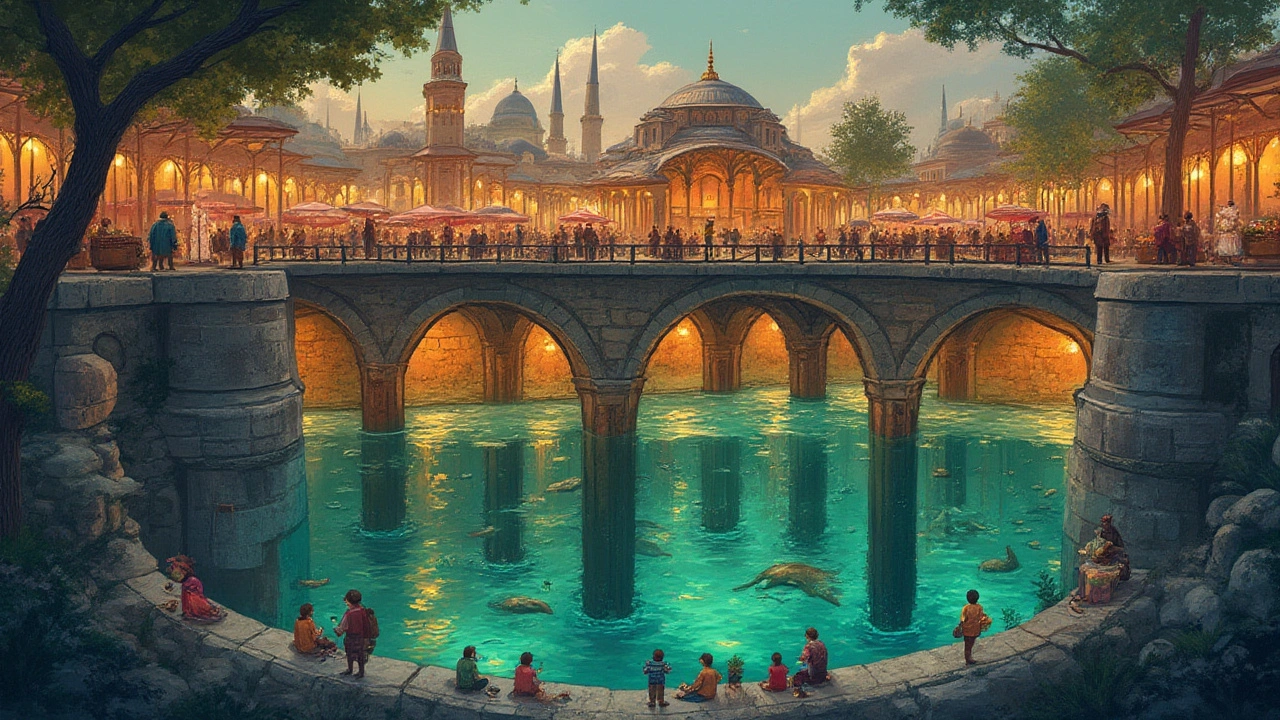
Visitor Tips: What Locals Know (and Guidebooks Forget)
So you’re planning a trip, or maybe you haven’t visited in years. Most Istanbul natives have dropped down for a cistern stroll at least once, probably dragged along by relatives or tourists. But here’s what even seasoned residents quietly suggest:
- Skip peak hours. Mornings right at opening (usually 9:00 am) and late afternoon near closing are quietest. Midday gets packed, especially from April to October, when cruise ships dump waves of visitors into Sultanahmet.
- Check out the fish. Seriously. The waters still teem with carp. The story goes they helped test if water was poisoned in imperial times—a surprisingly practical security check.
- Bring a light jacket or scarf. The cistern stays cool year-round, a blessing in July’s heat, but you’ll feel a chill even in August.
- Photography is encouraged, but turn off your flash—it bounces off the water and ruins the mood (and the Medusa heads look way cooler this way).
- Look up. The subtle vaults of the ceiling are often missed, but their elegant brickwork tells a story all its own. Roman engineers really didn’t do “just good enough.”
- Noise level matters. Kids love the echo, but sound gets multiplied. For a more mystical experience, time your visit for quieter periods.
- To really round out your Sultanahmet day, combine the Basilica Cistern with visits to the Hagia Sophia and the Turkish and Islamic Arts Museum nearby. Grab a quick balik ekmek (fish sandwich) from one of the Karaköy stalls if you’re heading that way after.
- Tickets can be bought online—recommended, as the line often spills out onto the plaza. The city’s official Museum Pass sometimes includes entry, but double-check online, since rules change often.
- Don’t rush. There’s a tendency to “do” the site in 20 minutes, but you’ll miss the sounds, shifting lights, and hidden art along the columns. Give yourself time to slow down.
- Accessibility is reasonable but not perfect. There are some ramps, but the floors can be slippery after rain. Wear good shoes.
Ask around, and you’ll hear firsthand stories from Istanbulites—tales about school trips, spooky childhood dares, or romantic first dates here. That’s the real magic. It’s part UNESCO treasure, part neighborhood memory lane. Think of it like the Grand Bazaar if it was crossed with a private museum—surprising, wholly Istanbul, and never quite the same twice.
Beyond the Columns: The Cistern’s Impact on Modern Istanbul
The Basilica Cistern isn’t just a museum piece for tourists—it’s quietly woven into daily life in ways that catch you off guard. Just ask people living or working in Sultanahmet or Sirkeci. The underground aquifers and cisterns are part of Istanbul folklore, but they’re also a reminder that the city, for all its chaos, has always had a plan for survival. Water is the lifeblood of any city, and this ancient engineering marvel kept imperial and modern Istanbul hydrated through sieges, fires, and citywide droughts. Even after losing its original function, the Basilica Cistern’s presence has shaped city planning—especially with Istanbul’s ever-growing population and the stress it puts on resources.
How does it fit into city life today? For starters, the cistern anchors Sultanahmet’s tourism circuit. It’s a top three must-see alongside the Hagia Sophia and Blue Mosque. Local businesses count on the crowds—cafes, bookshops, and pomegranate juice stands dot the square. Hotels like Sirkeci Mansion or Hotel Amira play up proximity to the cistern in their marketing. The Istanbul Metropolitan Municipality even uses the structure in promotional films. But the connection goes deeper. Architecture students debate its columns over çay at neighborhood tea gardens. Artists pull details from its shadows for illustrations and comics. Even pop culture has picked up on it: James Bond darted through the Basilica Cistern in “From Russia with Love,” and Turkish TV dramas use it when they need a dash of antique glamour.
Preserving the cistern is a local point of pride. Its big restoration in the 1980s wasn’t just for tourists; it was done with neighborhood feedback, input from Istanbul’s universities, and the expertise of Turkish archaeologists. Now, there’s ongoing work to keep it safe from water damage, earthquakes, and the city’s shifting needs. Some complain about the entry prices, but there’s wide agreement: access to living history like this is worth it.
There’s something iconic about the way the cistern brings people together—across languages, backgrounds, plans. In a city famous for contrasts (old bazaar at one corner, luxury hotel at the next), the Basilica Cistern hits a rare note of quiet unity. Artists, historians, commuters, and wide-eyed day-trippers all find something to love. And if you ever needed proof that Istanbul’s true beauty often lies a layer beneath, the Basilica Cistern is as convincing as proof gets.
